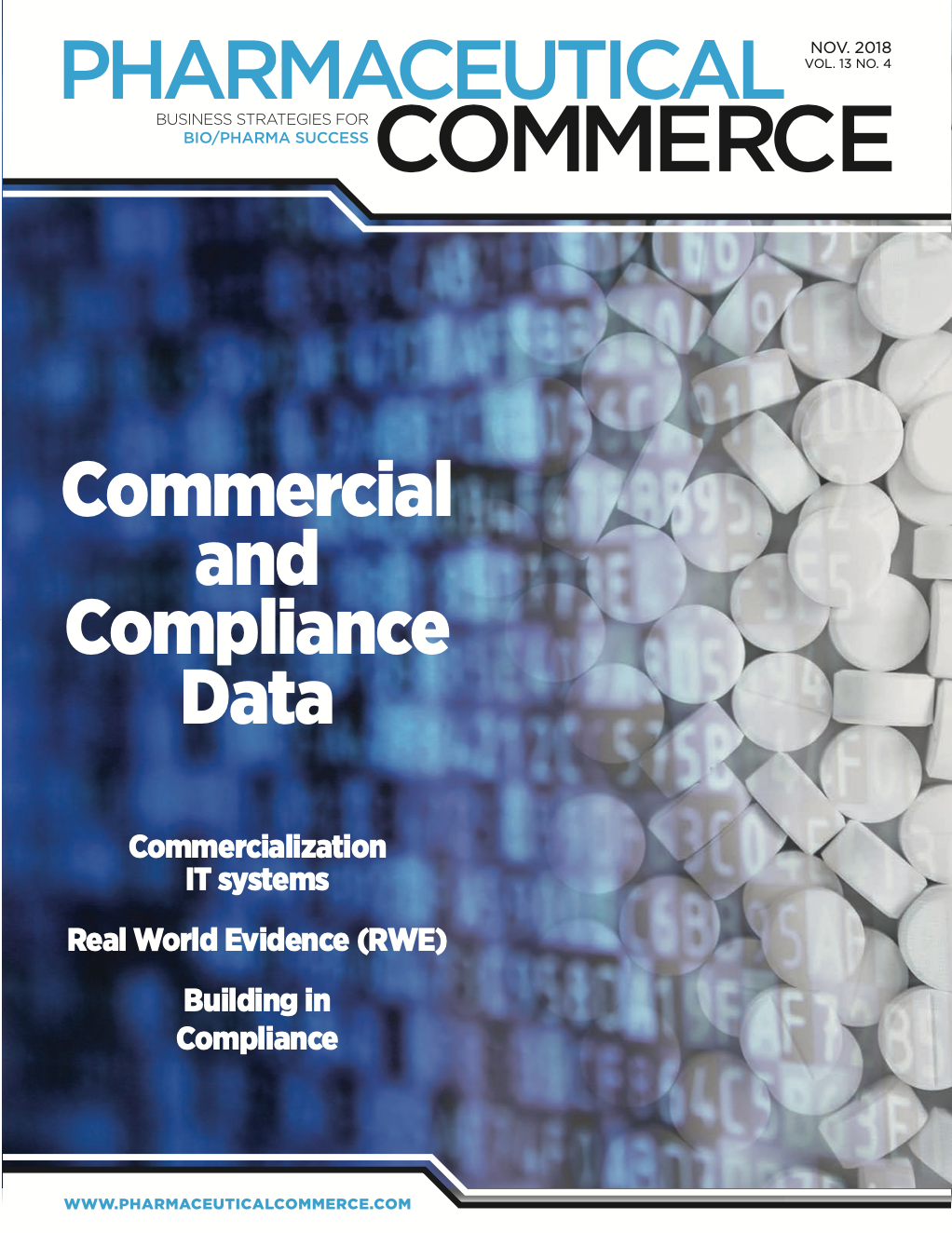Connecting with physicians—and patients—at the point of care
Integrating pharma communications with electronic health-record systems brings value to patients and providers
click to view larger

Multiple trends are converging to create a smarter, more agile healthcare industry—one where transparency and quality sit at the heart of strategy. Technological advancement, coupled with a reimbursement landscape defined by value, is changing the paradigm of care delivery for the better.
In line with these developments, the dynamics surrounding optimal approaches to direct-to-provider pharmaceutical marketing are also rapidly changing. Traditional approaches built on door-to-door distribution of prescription information and samples are no longer sufficient. Healthcare providers are now looking to pharmaceutical companies to partner with them and provide clinical and financial information, giving physicians a 360-degree purview that will help patients better afford treatment plans and ultimately create better health outcomes.
Just as patient care has evolved with increased adoption of technology, pharmaceutical marketing must follow suit to remain competitive. The reality is that electronic health-record (EHR) systems are now mainstream and control provider workflows, demanding a minimum of 5 hours of provider time per day. So pharmaceutical companies must provide timely communication within the EHR in order to get the HCP’s attention and stay relevant.
Five years ago, this challenge may have seemed insurmountable, but today’s pharmaceutical companies are increasingly evolving strategies to directly engage with providers at the point of care. Technological advancement that brings together point-of-prescribe networks and a fragmented EHR market creates a unique communication channel to providers, allowing drug companies to build integrated marketing campaigns that deliver tangible value to the point of care.
Traditional strategies’ shortcomings
Marketing efforts characterized by large sales forces and sizeable travel budgets are no longer sustainable as pharmaceutical companies try to identify strategies that deliver the greatest ROI. While door-to-door distribution of clinical information and samples may increase sales, it is a costly scheme that does not address the full picture of value for the provider.
As the concept of consumerism continues to take hold across the industry, providers need tools that empower patients in their care. For instance, consumers are increasingly looking to physicians to help them understand and manage hefty cost burdens introduced by high-deductible health plans (HDHPs), higher co-pays and a growing range of generic drug options.
Copay coupons and savings vouchers have been an important part of the solution to high drug costs, and many pharmaceutical companies have built these programs into their overall marketing scheme. Unfortunately, one ongoing challenge is raising awareness by getting the savings information in front of physicians. Consequently, busy providers often remain unaware of available opportunities, and billions of dollars in patient savings go unused, resulting in missed opportunities to engage new customers.
Growing interdependence in the payer, providers and pharmaceutical value chain means that physicians are looking to drug companies to partner with them to deliver more proactive care that promotes sustainable population-health improvement and lower costs. For example, consider the current industry focus on medication non-adherence—an avoidable problem that is connected to billions in healthcare costs annually due to poor outcomes and disease progression. Industry research points to high drug costs as a primary contributing factor to medication non-adherence. As such, providers need to empower patients with ways to afford their medications to improve the outlook. They also need access to methods for addressing alarming rates of health illiteracy and transparency into whether patients are following through with drug therapies.
Meeting physicians where they are
A recent Surescripts report revealed that 85% of providers now use e-prescribing, making this area of a physician’s workflow a prime target for pharmaceutical marketing efforts. In tandem with this statistic, a survey by Atlantic Information Services revealed that 80% of physicians were either “more likely” or “much more likely” to prescribe a drug with a copay card, and 71% want to know about drug discount copay/voucher programs.
The business case for embedding patient savings opportunities into physician e-prescribing workflows is an easy one to make, especially since e-prescribing is driven by mandates and now mainstream across the industry. When pharmaceutical companies can deliver, track and report on this kind of content—and much more—across a large point-of-prescribe promotional network, the value proposition for physicians significantly increase. Notably, research points to improved medication adherence when patients can identify ways of lowering their copayments.
Pharma companies can elevate price transparency for providers and patients by providing financial messaging in the workflow, enabling physicians to show true costs to patients when a brand is prescribed.
During a patient encounter, physicians search for a brand name drug within the EHR, and in real-time, receive information on available offerings for a specific patient. The coupon or voucher is then printed, texted or emailed for the patient to present to a retail pharmacy provider, improving medication affordability, encouraging adherence and fostering better clinical outcomes. In tandem, the coupon or voucher is embedded in the electronic prescription and sent directly to the pharmacy.
The delivery of customized content that helps physicians better educate their patients on how to take their medications presents another opportunity to add value. Busy physicians can access needed materials during the patient encounter workflow and empower patients with the knowledge needed to successfully comply with medication regimens. In addition to savings information, the intelligent point-of-care technology can also alert physicians about recommended tests or procedures related to a patient’s condition, prompting additional action if needed.
Integrated content marketing can also provide a critical piece of information that physicians are often missing: confirmation that a patient picked up their prescription or refill. From the standpoint of proactive care that improves population health, this single insight can vastly improve the outlook and be the determining factor for whether a patient with a chronic condition ends up in the emergency room. Armed with this important insight, physicians can get ahead of the medication non-adherence problem through proactive outreach to patients.
Investing in a solution
OptimizeRx’s digital health care messaging platform is an example of a solution helping to improve critical communication between pharma companies and healthcare providers. Providers can be alerted to available financial programs right at the point-of-care. In 2017 alone, more than $2 billion in e-prescriptions were transmitted from doctor to pharmacy. Today, most hospital systems require that all medications be e-prescribed.
As personalized medicine grows in popularity and specialty treatments are more commonly prescribed, platforms like OptimizeRx that exist at the point-of-care will be a powerful enabler of communication between the pharma industry and healthcare professionals.
More than half of all ambulatory-health providers are accessible through the EHR systems that OptimizeRx is currently integrated with. Typically, a 2:1 ROI is generated for marketing resources invested in the platform.
Pharmaceutical marketing is no longer about just “selling pills.” Providers are increasingly looking to companies that are willing to collaborate with them to improve care quality and help them improve their own brand. In the digital age of healthcare, this requires a strategy that meets physicians where they are and delivers value to the point of care. Forward-looking companies must consider how to incorporate next-generation strategies that optimize this kind of exposure.

Will Febbo is CEO of OptimizeRx. For the past 18 years, Febbo has been a serial entreprenuer in companies that combine health services and technology. Currently he is also a faculty member of MIT linQ, a collaboration initiative for international training and development programs. Febbo holds a BA degree from Dickinson College.
Newron, Myung In Pharm Form Partnership Centered Around Treating Schizophrenia in South Korea
January 14th 2025The license agreement will feature an upcoming Phase III trial and—depending on results—the development, manufacturing, and commercialization of evenamide as a potential treatment option.
